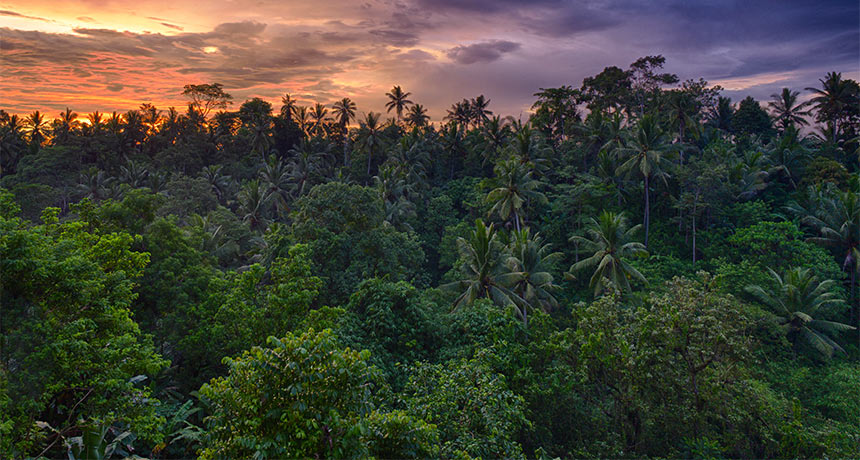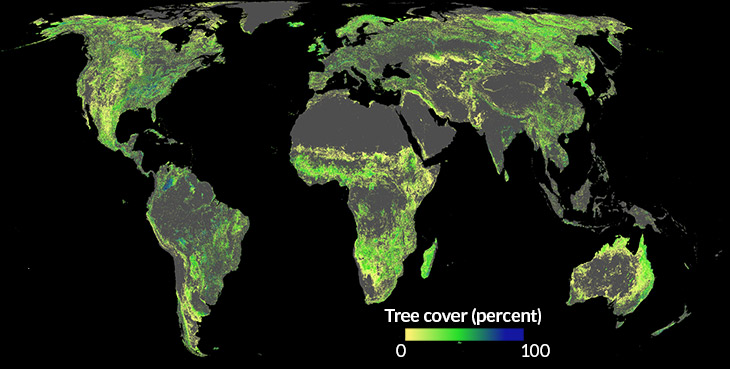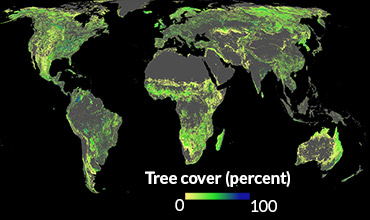Planting trees could buy more time to fight climate change than thought
Earth has 0.9 billion hectares that are suitable for new forests

PLANTING TIME There’s room on Earth for a lot more forests, a new study finds. Planting a lot of trees soon could capture carbon and buy time to cope with climate change.
Lightscape/Unsplash
A whopping new estimate of the power of planting trees could rearrange to-do lists for fighting climate change.
Planting trees on 0.9 billion hectares of land could trap about two-thirds the amount of carbon in the atmosphere that’s come from human activities since the start of the Industrial Revolution, a new study finds. The planet has that much tree-friendly land available for use. Without knocking down cities or taking over farms or natural grasslands, reforested pieces could add up to new tree cover totaling just about the area of the United States, researchers report in the July 5 Science.
The new calculation boosts tree planting to a top priority for gaining some time to fight climate change, says coauthor Tom Crowther, an ecologist at ETH Zurich. The study used satellite images to see how densely trees grow naturally in various ecosystems. Extrapolating from those images showed how much forest similar land could support. Plant a mix of native species, he urges. That will help preserve the birds, insects and other local creatures.
The analysis revealed space to nourish enough trees to capture some 205 metric gigatons of carbon in about a century. That’s close to 10 times the savings expected from managing refrigerants, the top item on a list of climate-fighting strategies from the nonprofit Project Drawdown, a worldwide network of scientists, advocates and others proposing solutions to global warming.
The benefit of tree planting will shrivel if people wait, the researchers warn. Earth’s climate could change enough by 2050 to shrink the places trees can grow by some 223 million hectares if the world keeps emitting greenhouse gases as it does now, the analysis suggests.
More trees here
A map of the planet’s potential to support new forests avoids cities, farmlands and natural grasslands to rate the remaining land as likely to support low (yellow) to high (blue) canopy cover.


Still, storing carbon is only one of the ways that trees could affect climate, says Cat Scott, an atmospheric scientist at the University of Leeds in England who was not involved in the research. Just how these other factors play off each other is not yet clear. She and colleagues have developed computer simulations of trees contributing to cooling a landscape by releasing airborne molecules that invite clouds to form.
Even something as simple as the darkness of tree leaves can change how much heat a landscape absorbs or reflects. Expanding forests into formerly snow-bright, reflective zones, for instance, might warm them. In the tropics, however, the enhanced cooling from clouds might be the more powerful effect.
Ultimately, in the struggle against climate change, such heroic tree planting merely “buys us time,” says study coauthor Jean-François Bastin, also an ecologist at ETH Zurich. But that’s time human societies could use to stop emitting greenhouse gases, the real solution to climate change, he says.
About this story
Why is Science News doing this story?
Proposing a big number for the land available for planting forests sounded like a rare, cheering bit of news about fighting climate change. The idea that reforesting land could buy time in the struggle by pulling the greenhouse gas carbon dioxide out of the air isn’t new, so we decided to make this an item in a series called Science Stats, focused on statistics in the news. The challenge was squeezing in some sense of the uncertainties and related research.
How did I report this story?
Normally I would have talked to a scientist who didn’t contribute to the paper to ask for a critique of the paper’s main points on carbon storage and tree habitat. Carbon storage, however, gets far more attention than other ways that trees might interact with climate, so I wanted to at least acknowledge the wide range of questions. Cat Scott, who wasn’t connected with this paper, creates computer models of the effects of the small molecules that trees emit, and she gamely agreed to talk about that bigger picture. For some of the big questions, she said the answers are unknown or have not yet produced a consensus. That’s not unusual for science, and I intended for that part of the story to give a glimpse at the field’s complexity.
— Susan Milius
What’s this box? Learn more about it and our Transparency Project here. Can you help us by answering a few brief questions?






